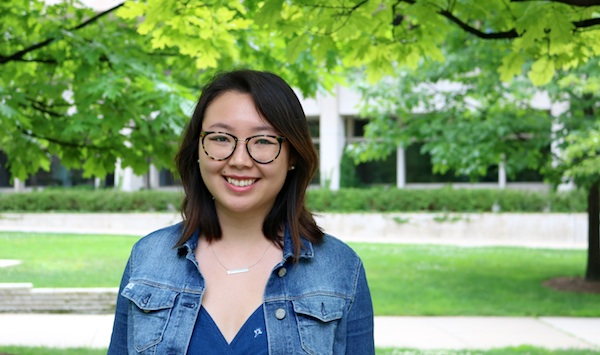By Irene Hsiao
Proteins are the primary functional molecules in cells and organisms. Their chemical structure—and therefore their biochemical functions—are encoded by faithful transcription and translation of DNA sequences. However, the sequence of a protein merely represents a starting point for the true chemical structure of functional proteins found in cells and organisms. Proteins in living cells are decorated with diverse posttranslational modifications (PTMs), small chemical marks placed at precise positions that can drastically affect their structure and function. Nature employs the combination of tens of thousands of protein sequences with the hundreds of distinct types of PTMs to provide an astronomical diversity in protein chemical structure. The dynamic addition and removal of these modifications underlie nearly all biological processes, including those that go awry in diseases like cancer and diabetes.
To identify the location of PTMs on proteins, researchers have previously relied upon mass spectrometry, unearthing more than a hundred thousand known modification sites in humans alone. Despite these advances, a central issue has remained: these studies identify that a PTM site exists but do not provide information on how that chemical mark affects the protein or the consequent physical interactions and biochemical functions of that protein. In “High Throughput Discovery of Functional Protein Modifications by Hotspot Thermal Profiling,” published 5 August 2019 in Nature Methods, Raymond Moellering’s lab reports a new method to identify and interrogate the biophysical properties of tens of thousands of modified proteins simultaneously in live cells. This method, called “Hotspot Thermal Profiling,” therefore enables efficient selection of functionally important modifications for further study, as well as insight into the network of proteins and biomolecules that are interacting with that particular modification site in cells.

Now a rising fifth-year graduate student, first author Jun Huang studied biochemistry at Smith College and worked for three years as a research scientist at the Novartis Institutes for Biomedical Research before pursuing an advanced degree. At NIBR, Huang used mass spectrometry to characterize antibody-drug conjugates and developed assays for screening potential drugs and elucidating intracellular drug targeting and interactions. In a chemical biology course at the University of Chicago, Huang was impressed by Moellering’s ideas for developing novel chemical tools to answer fundamental biological questions and address therapeutic needs. Huang also leaped at the opportunity to use her background in mass spectrometry for proteomic studies. “Being able to continue learning more about this advanced technology in Ray’s lab has been perfect,” she says.
“The most rewarding aspect about this piece of work is that we discovered previously unknown posttranslational modifications that have functional significance in well-studied proteins, like GAPDH. It truly shows how many posttranslational modifications remain uncharacterized,” Huang says. “What’s really amazing about this method is its flexible applicability to diverse organisms, cell types, and modifications, so we are interested in exploring different metabolic states to discover and characterize novel PTM-mediated interactions.”
In addition to providing a new method for understanding the diversity and function of protein modifications in living cells, Moellering and Huang also plan to use this method to understand the target proteins and pathways affected by therapeutics in the future. “Chemistry is the study of the structure, reactivity, and function of molecules. Here, we have developed a method that interrogates the connection between protein chemical structure and function on a global scale directly in cells, providing a completely new view of the roles they play in normal and dysregulated signaling,” Moellering says.